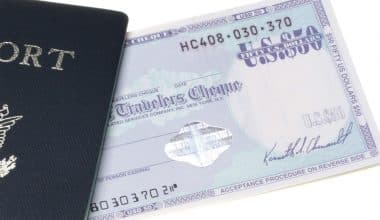Do you want to know about the 311 rule, implemented by the TSA? This policy regulates the transportation of liquids in carry-on bags. It states that liquids must be stored in containers holding 3.4 ounces (100 milliliters) or less. These containers must fit into a single, quart-sized clear plastic bag. Each passenger is allowed only one such bag of liquids, which must be sealed and easily accessible for inspection. Exceptions may be made for medications, baby formula, breast milk, and necessary liquids, subject to additional screening. Containers larger than 3.4 ounces are not allowed in carry-on bags. In this article, all you need to know about the 311 Rule on TSA liquid Luggage is elaborated for your understanding.
What is the 311 Rule?
The TSA 3-1-1 rule refers to the regulations set by the Transportation Security Administration (TSA) regarding the transportation of liquids, gels, and aerosols in carry-on luggage when traveling by air. The rule is designed to enhance security measures while still allowing passengers to bring necessary personal items on board.
The TSA 3-1-1 rule applies to air travel within the United States and on international flights departing from or traveling to U.S. airports. The rule is enforced by the Transportation Security Administration (TSA), which is responsible for security screening at airports in the United States.
Information about the TSA 3-1-1 rule:
#1. Containers
The rule specifies that liquids, gels, and aerosols must be in containers that hold 3.4 ounces (100 milliliters) or less. This includes items such as shampoo, toothpaste, lotion, perfume, and beverages. Containers larger than 3.4 ounces are not allowed in carry-on luggage, even if they are only partially filled.
#2. Quart-Sized Bag
All containers that meet the size requirement must fit into a single, clear, quart-sized plastic bag. The bag should be transparent, resealable, and no larger than 1 quart (approximately 1 liter) in size. The purpose of the clear bag is to facilitate the screening process, allowing security personnel to easily inspect the contents without the need to open each container.
#3. One Bag per Passenger
Each passenger is limited to one quart-sized bag of liquids, gels, and aerosols. This means that you cannot distribute your liquids across multiple bags or carry multiple quart-sized bags. The bag must be easily accessible and presented separately at the security checkpoint for inspection.
#4. Separate Screening
At the security checkpoint, you will be required to place the quart-sized bag containing your liquids, gels, and aerosols in a separate screening bin. This allows the TSA officers to quickly and efficiently screen the bag without causing delays or holding up the security process.
Advantages of the 3-1-1 Rule
#1. Security Enhancement
The primary advantage of the 3-1-1 rule is that it enhances security measures at airports. By limiting the size and quantity of liquids, gels, and aerosols in carry-on luggage, the rule helps ensure that potentially dangerous substances are not brought aboard an aircraft.
#2. Streamlined Screening Process
The rule promotes a more efficient and streamlined screening process. The requirement to place all liquids in a quart-sized bag allows TSA officers to quickly inspect and identify these items during security checks. Reducing the need for time-consuming individual inspections.
#3. Consistency
The 3-1-1 rule provides a standardized approach to carry-on restrictions across airports in the United States. This consistency helps passengers understand and comply with the regulations, reducing confusion and improving overall security effectiveness.
#4. Standardized International Travel
The 3-1-1 rule has been widely adopted by many countries, which promotes consistency and familiarity for international travelers. It allows passengers to have a clear understanding of what is allowed in their carry-on bags regardless of their destination.
Disadvantages of the 3-1-1 Rule
#1. Inconvenience for Passengers
The 3-1-1 rule can be seen as an inconvenience for passengers, as it requires them to carefully measure and pack their liquids into small containers. This can be time-consuming and may result in additional expenses for purchasing travel-sized products.
#2. Restriction on Carry-On Items
The rule imposes restrictions on the number of liquids, gels, and aerosols that can be carried in carry-on luggage. This limitation may inconvenience passengers who prefer to have larger quantities of these items readily accessible during their flights.
3. Potential Overreach
Critics argue that the 3-1-1 rule may be overly restrictive and unnecessary in certain cases. Some believe that advancements in technology and security screening techniques should allow for more flexible regulations without compromising safety.
#4. Inconvenience for Certain Items
The 3-1-1 rule may be particularly inconvenient for certain items that are essential for some travelers. Such as medical supplies, baby formula, or specific personal care products. These individuals may need to make additional arrangements or seek exemptions to ensure their needs are met.
#5. Variation in International Regulations
While the 3-1-1 rule provides consistency within the United States, other countries may have different regulations or variations on carry-on restrictions. This can lead to confusion and inconvenience for travelers who may have to adjust their packing and comply with different rules depending on their destination.
The 311 Rule Exemptions
While the TSA 3-1-1 rule generally applies to liquids, gels, and aerosols in carry-on luggage, there are certain exemptions to the rule.
Here are some common items that are exempted:
#1. Medications
Prescription medications and over-the-counter medications are exempt from the 3-1-1 rule. You are allowed to carry necessary liquid medications, such as cough syrup or eye drops, in quantities exceeding 3.4 ounces (100 milliliters).
#2. Baby Formula/Milk
Baby formula, breast milk, and baby food are exempt from the 3-1-1 rule. These items are allowed in quantities exceeding 3.4 ounces (100 milliliters) and are not required to be in a quart-sized plastic bag. You may be asked to separate these items from the rest of your carry-on baggage for screening.
#3. Liquids for Special Dietary Needs
If you require liquids for special dietary needs, such as liquid nutrition or medically necessary liquids, they are exempted from the 3-1-1 rule.
#4. Duty-Free Purchases
Liquids, gels, and aerosols purchased from airport duty-free shops or onboard an aircraft are generally exempt from the 3-1-1 rule. They are allowed in your carry-on baggage, provided they are properly sealed in a tamper-evident bag and accompanied by proof of purchase.
#5. Solid Cosmetics and Personal Care Items
Solid cosmetics, such as lipstick, solid deodorants, and solid perfumes, are generally not subject to the 3-1-1 rule. These items can be carried in your carry-on bag without any quantity restrictions.
Airlines Operating The 311 Rule
Major airlines operating the 311 rule in the United States:
#1. American Airlines
American Airlines is one of the largest airlines in the world, offering an extensive network of domestic and international flights.
#2. Delta Air Lines
Delta Air Lines is a major U.S. airline with a widespread domestic and international network.
#3. United Airlines
United Airlines is a prominent carrier serving destinations across the United States and around the world. It provides a wide range of domestic and international flight options.
#4. Southwest Airlines
Southwest Airlines is the largest low-cost carrier in the United States, known for its extensive domestic network.
#5. JetBlue Airways
JetBlue Airways is a low-cost airline that primarily operates out of focus cities on the East Coast of the United States. It offers a mix of domestic and international flights.
#6. Alaska Airlines
Alaska Airlines is a major carrier based on the West Coast of the United States. It operates a vast network of routes, including many destinations in Alaska. Alaska Airlines offers various cabin classes, including First Class and Premium Class, and has a frequent flier program called Mileage Plan.
Why Is It Called The 311 Rule?
The 3-1-1 rule is called so because it refers to the specific requirements set by the Transportation Security Administration (TSA) regarding the transportation of liquids, gels, and aerosols in carry-on luggage. The rule is named “3-1-1” because it outlines the following guidelines:
3: The number “3” represents the maximum container size allowed for liquids, gels, and aerosols. Containers must hold 3.4 ounces (100 milliliters) or less.
1: The number “1” represents the limit of one quart-sized (approximately one liter) clear plastic bag that passengers are allowed to use for carrying their liquids, gels, and aerosols.
1: The number “1” also signifies that each passenger is limited to one plastic bag.
The name “3-1-1 rule” is an easy way to remember and refer to the specific requirements related to the quantity and packaging of liquids, gels, and aerosols allowed in carry-on luggage when going through airport security checkpoints. It helps to provide a standardized approach and clear guidelines for passengers when preparing their carry-on items.
Is The 311 Rule Only For Carry-On?
Yes, the 3-1-1 rule specifically applies to liquids, gels, and aerosols carried in carry-on luggage when going through security checkpoints at airports. The rule is designed to ensure the safety and security of air travel by placing restrictions on the quantity and packaging of these items in carry-on bags.
The 3-1-1 rule does not apply to checked baggage. In general, there are fewer restrictions on liquids, gels, and aerosols in checked luggage, as they are screened differently and not accessible during the flight. However, it’s important to note that certain hazardous materials and substances are prohibited in both carry-on and checked luggage.
If you are traveling with liquids, gels, or aerosols in your checked baggage, it’s recommended to pack them securely to prevent leaks or spills and to comply with any specific regulations or limitations set by the airline or relevant authorities.
Is The 3-1-1 Rule Still In Effect?
Yes, the 3-1-1 liquid rule is still in effect and being enforced by the TSA (Transportation Security Administration) at airports around the country. Although regulations related to air travel are subject to change over time, it’s always best to check the TSA’s website. It better still contact them directly for the most up-to-date information.
Does Toothpaste Count As A Liquid?
Yes, toothpaste is considered a liquid according to the TSA’s 3-1-1 liquids rule for air travel. This means that toothpaste must adhere to the same regulations and size restrictions as other liquids, and must be placed in a quart-sized, clear plastic. Or in sealable bags in containers that are 3.4 ounces or 100 milliliters or smaller if being carried in carry-on luggage. However, toothpaste is generally allowed in both carry-on and checked bags, as long as it meets the size requirements outlined in the 3-1-1 rule.
Can I Bring Perfume On A Plane?
Yes, you can bring perfume on a plane according to the search results. Perfume is subject to the TSA’s 3-1-1 rule which requires that it must be in containers that hold no more than 3.4 ounces or 100 milliliters, and all liquid containers must be placed in a quart-sized, clear plastic, sealable bag if being carried in carry-on luggage. Additionally, perfume is allowed in both carry-on and checked bags, as long as it meets the size requirements set forth by the 3-1-1 rule.
How Strict is the 311 Rule?
The TSA is strict in enforcing the 3-1-1 rule, which limits the size and amount of liquids that passengers can bring with them in their carry-on bags. The rule requires that liquids be placed in containers that are 3.4 ounces or 100 milliliters or smaller and that all containers fit inside a single quart-sized, clear, plastic, sealable bag. If passengers bring more or larger liquids, they may be asked to dispose of them or have their bags searched as a result. However, while the TSA is expected to follow the rule, there may be exceptions to the 3-1-1 rule or situations where an individual agent may apply some discretion, such as for medically necessary liquids, or even overlook a minor infraction, depending on the circumstances.
Why Aren’t Liquids Allowed On Planes?
CoLiquids, gels, and aerosols are subject to restrictions when carried in carry-on luggage on planes due to security concerns and measures implemented to ensure passenger safety. Liquids can potentially be used to create explosive devices. By limiting the quantity and packaging of liquids, the risk of someone bringing hazardous substances on board an aircraft is reduced. The restrictions on liquids help enhance the efficiency of security screening procedures. By limiting the quantity and requiring liquids to be placed in a clear plastic bag, security personnel can quickly identify and inspect these items, speeding up the screening process for all passengers. The restrictions on liquids help mitigate security threats related to the smuggling of dangerous or prohibited substances. By limiting the quantity and ensuring transparency through the clear plastic bag requirement, it becomes easier for security personnel to identify any suspicious or unauthorized items.
Conclusion
The 311 rule is a regulation implemented by the Transportation Security Administration (TSA) regarding the transportation of liquids in carry-on luggage. It is designed to ensure the safety and security of air travel. Passengers are allowed only one quart-sized bag of liquids. This limitation ensures that the overall volume of liquids brought on board remains within manageable limits. All liquid containers must be placed in a single, clear, quart-sized plastic bag. The bag serves as a convenient and standardized method for inspection and helps maintain the security screening process efficiently.
The plastic bag containing the liquids must be sealed and easily accessible for inspection at the security checkpoint. It should be presented separately from other carry-on items to facilitate screening. Exceptions are granted for essential liquids such as medications, baby formula, and breast milk, which may require additional screening procedures.
Related Articles
- IS FLIGHT INSURANCE WORTH IT? Coverages and Costs
- Requirements to Be a Flight Attendant (Detailed Guide)
- Fear of Flying? Here’s How to Overcome It
- How Far in Advance Should I Book a Flight in 2023?
- When Is the Best Time to Book a Flight? What You Should Know






